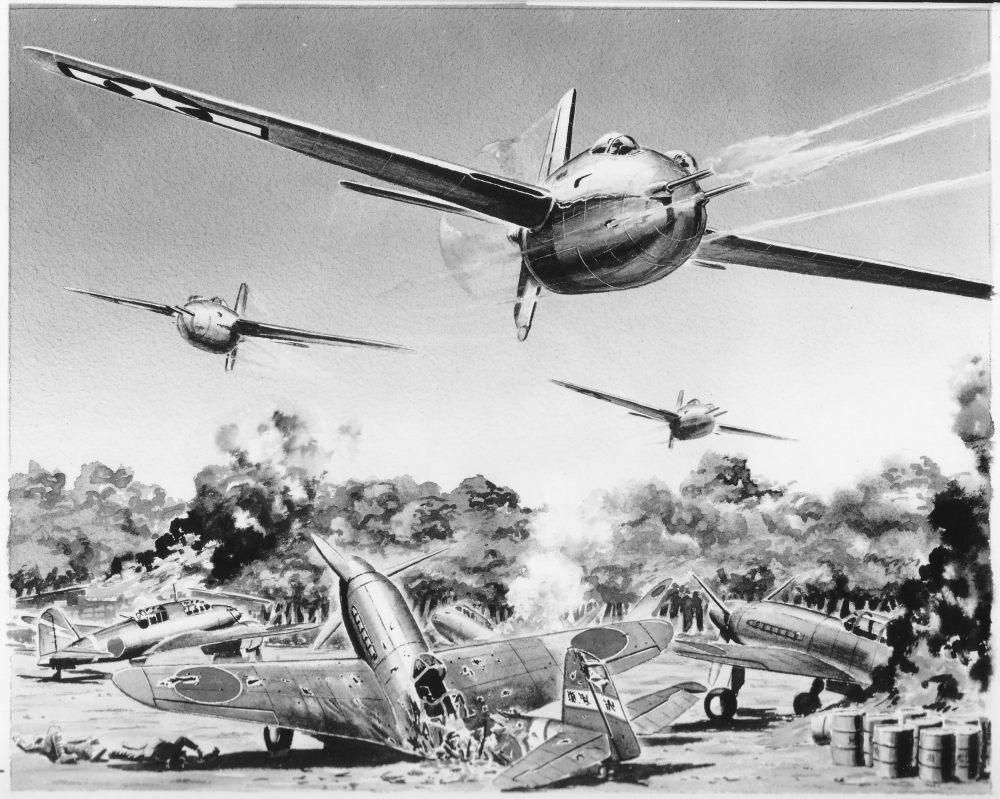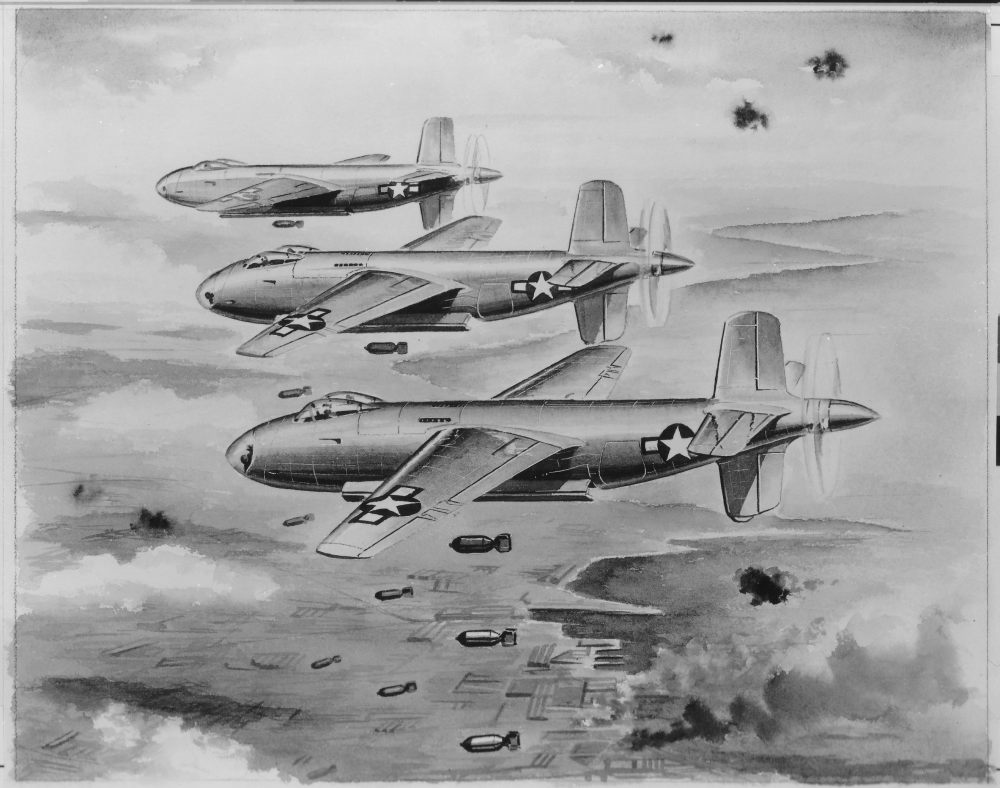Sep 202010
Two paintings depicting the B-42 “Mixmaster” in action. The first shows it in a ground attack role, armed with (probably) two 37-mm cannon; the second shows it in a conventional bombing role. The actual origin of the artwork is unknown. Presumably Douglas, presumably wartime, but I’ve no data on specifics.
Courtesy Mark Nankivil.
6 Responses to “B-42 Artwork”
Sorry, the comment form is closed at this time.


The thing I could never figure out with that aircraft were the twin canopies.
Side-by-side seating has both a up and a down side. The downside is that scanning for enemy aircraft must be done by both crew members, each looking for threats on his side of the aircraft; the upside is that the two crew have excellent communications, as was noted on both the A-6 and F-111.
But if you stick them under separate canopies, you lose that ability for them to easily communicate, and probably only gain a few mph from drag reduction.
Douglas used the same layout on the original C-74 Globemaster, and it made even less sense on a cargo plane than it did on a bomber, as gaining a few mph on a cargo plane really isn’t that important:
http://www.dougloid.com/pictures/C74flight.jpg
Was it maybe to make it easier to pressurize the aircraft?
Anyway, the C-74’s were later retrofitted with a more conventional cockpit canopy that somewhat resembled that of the B-36.
Walt Boyne wrote an article on the XB-42/43 for the September, 1973, “Airpower” magazine. Both XB-42s were originally fitted with the bug eyes. The test pilot reported that when things got hairy, he’d duck down to talk with the co-pilot, and after a short discussion whatever was wrong had probably cleared itself. A problem with formation flying seems to have been the major complaint. Page 8, photo 2: “Double canopies illustrated in Douglas brochure gave B-42 a bug-eyed look and actually forced pilots to bend down in order to communicate with one another.” Page 8, photo (on page 9): “Note excellent visibility enjoyed by the crew; pilots objected to “bug eyes” on the basis of restricted side visiblity for formation flying, and because of the difficulty of communicating by interphone.” Page 11, photo 5: “While the twin bugeye canopies provided good visibility through about 280 degrees, they did inhibit vision toward the other canopy, and communication tended to be difficult via interphone. Everyone preferred the conventional canopy of second XB-42A, and any production models would have been so fitted.”
There’s more, of course.
The article has the second of your images, Scott. It’s attributed to McDonnell Douglas, and it’s part of a grouping that came from the Douglas sales brochure.
BTW, did you ever notice how fixated artists were on the Japanese “Tony” fighter? The thing was a flop, but during the war it was always being portrayed as some sort of new generation fighter that would no doubt replace those inferior radial-engined ones.
That hits some sort of an apex here, where the blood-crazed fighter pilot threatens us with a five-pound bomb:
http://www.thingsyoungerthanmccain.com/wp-content/uploads/2008/08/popsci.jpg
While standing in front of a in-line engined something that almost looks like a Yak fighter crossed with a P-51
Regarding the canopy they replaced the “bug-eyes” with, I said it was something like that on the B-36, but what it was really more like was the one on the Douglas Skyknight – compare:
http://www.wingweb.co.uk/wingweb/img/450-Douglas_F3D-2_SkyKnight.jpg
At least when the British did the side-by-side seating on the Mosquito they had the copilot seated in a staggered position a bit to the rear of the pilot, so he could look out to either side*.
What makes that set-up interesting is that it’s the reverse of British cars; pilot is on the port side, like the driver in American cars.
* This also had a bit of a downside; the levers to control the fuel feed from the wing tanks to the engines were located to the rear of the copilot’s seat, and if the pilot was trying to switch tanks in a hurry, it was possible to start grabbing the copilot’s ass instead of the levers – resulting, as one Mosquito pilot put it, in a “profound silence” on the part of both crew members.
The destroyed fighter in the foreground echoes a P-4- burned out at Pearl Harbor: http://www.history.navy.mil/photos/images/g30000/g32906.jpg
> the reverse of British cars; pilot is on the port side, like the driver in American cars.
British aviation had effectively standardised on ‘pilot on the port side’ by the mid-1920s.